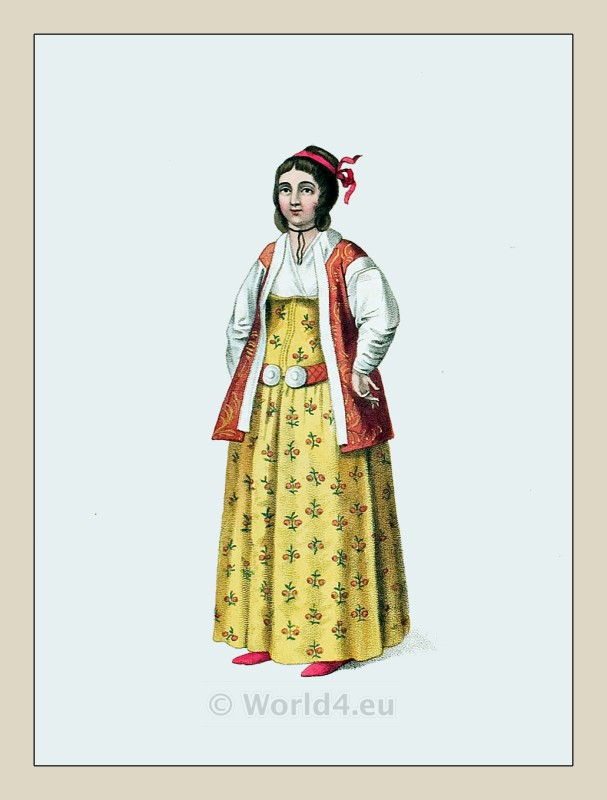The Interior of the hut of a Mandan Chief.
Interieur de la Cabane d un Chef Mandan.
The Mandan (proper name: Numahkahke) are a small, originally semi-nomadic Indian people of North America from the Sioux language family who lived along the Missouri River and its two tributaries, the Heart and Knife Rivers, around the year 1800.
Archaeological finds indicate that the Mandan came from the Ohio River valley before moving to the banks of the Missouri. In 1838, most of them fell victim to a smallpox epidemic. Under the Indian Reorganization Act of 1934, the Mandan officially joined with the Arikara and Hidatsa to form the Three Affiliated Tribes.
Half of all descendants of these three tribes live together today on the Fort Berthold Reservation in North Dakota, while the rest are scattered throughout the USA and Canada. Some older Mandan still speak the traditional tribal language.
Unlike other Plains tribes, the Mandan lived in permanently inhabited villages instead of the semi-nomadic lifestyle of their neighbours on the Great Plains. In the 19th century, the Mandan lived in dome-shaped, earth-covered huts built in palisaded villages.
They planted maize, beans, squash and sunflowers, hunted bison in hunting season and engaged in pottery and basketry. They had elaborate ceremonies, including the Sun Dance and the Okipa (ö-kee-pa), a four-day festival with a long preparation period.

These were dances to propitiate the water spirits and in honour of the bison. The festival ended with cruel sacrificial ceremonies in which young men sacrificed their own flesh in severe trials and torture rituals. At the end, straps from which bison skulls hung were torn from their legs.
The young men who could bear the pain best became the future tribal leaders. In addition, there were many other ceremonies organised by smaller groups. The bear ceremony, for example, was associated with the healing of diseases and the strengthening of fighting power in warriors.
Mandan villages consisted of 12 to 100 huts. There were several chiefs in each group. In terms of social organisation, there were warrior associations graded according to age, membership of which was acquired by purchase. The Mandan also had social, shaman and women’s associations. Mandan artists painted buffalo robes and depicted heroic deeds of the tribe and individual warriors.

Source:
- Maximilian, Prince of Wied’s Travels in the Interior of North America, during the years 1832–1834, by Prince Maximilian of Wied. Illustrator: Karl Bodmer. Engraver: Martens. Published by Ackermann & Cie, 96 Strand, 1st March 1841.
- North American Indians: being letters and notes on their manners, customs, and conditions, written during eight years’ travel amongst the wildest tribes of Indians in North America, 1832-1839 by George Catlin (1796-1872). London: Catlin 1880.
Related
Discover more from World4 Costume Culture History
Subscribe to get the latest posts sent to your email.







